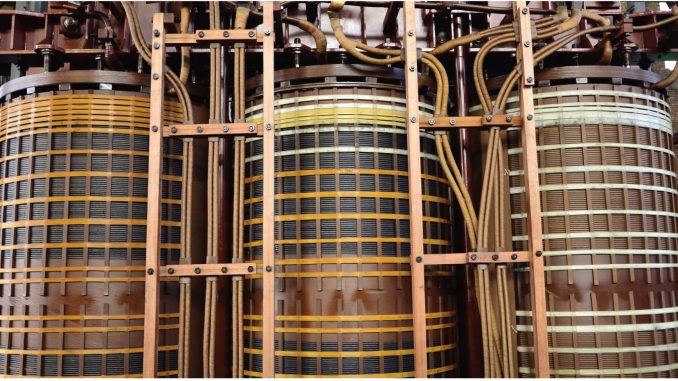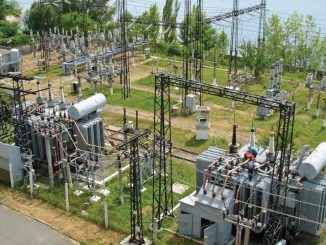
Over the years, transformer technology has evolved considerably to meet the emerging requirements of utilities and enhance power system reliability. The conventional oil-filled transformers are being replaced with dry-type transformers and advanced smart transformers. The ester-filled transformers, which offer the unique features of fire resistance, biodegradability and enhanced reliability, have become popular in the transmission and distribution segments. Phase shifting transformers (PSTs) are also gaining traction as they protect the equipment from thermal overload and increase the stability of the transmission system. Further, with the increase in high voltage direct current (HVDC) lines, the demand for converter transformers has increased in recent years to enable efficient electricity transfer over long distances.
Phase shifting transformers
One of the key emerging trends in the power transformer space is the use of PSTs. These transformers regulate the power flow in the transmission grid. They protect the transmission lines and high voltage equipment from thermal overload and control the power flow between two networks. PSTs enhance real power handling capacity of transmission lines and allow flexibility in real power transmission without affecting VAR considerably. Overall, PSTs increase transmission system stability, reduce network losses and enhance efficiency.
With regard to the deployment of PSTs in the India, Bharat Heavy Electricals Limited commissioned the country’s first indigenous PST in December 2014 at the Kothagudem Thermal Power Station Stage-VI in Telangana. The 400/220 kV, 315 MVA rating PST is used to control and improve the power flow between 400 kV and 220 kV networks in either direction by providing phase shift as per system requirement. The PST was designed to provide phase shift of + 15 degree. It is a FACTS (flexible AC transmission system) device, made with a combination of shunt and series transformers. PSTs are site-specific and need to be planned on a case-to-case basis through proper system studies. Preliminary studies have been carried out for the use/deployment of PSTs in the interregional link between the southern region and the NEW (northern, eastern, western) grid.
HVDC convertor transformers
Another emerging technology is converter transformer technology. Convertor transformers are at the core of an HVDC transmission link as they convert AC voltage into DC voltage and vice versa to enable efficient electricity transfer over long distances. These are dedicated transformers that have one of their windings connected to inverter and rectifier circuits. In HVDC systems, converter transformers ensure the supply of AC voltages into two separate circuits feeding the rectifier bridges with a phase shift of 30 electrical degrees to reduce the low order harmonics.
The use of convertor transformers is gaining traction with the expansion of the HVDC network in the country. These transformers are characterised by low transmission losses and high electricity transmission as the transmission losses are lower for DC than AC and more electricity is transmitted at high voltage levels. Further, these transformers act as a galvanic barrier between the AC and DC systems to prevent DC from entering into the AC system. These also maintain the reactive impedance in the AC supply to reduce short circuit currents and to control the rate of increase in the valve current during commutation.
Ester-filled transformers
Natural ester-filled transformers are also witnessing growing uptake owing to their fire resistance feature. As natural ester has high fire points of around 360 ºC, and a flash point of 320 ºC, which is twice the fire points of mineral oil, it makes the transformers fire resistant. Besides, natural ester is biodegradable in nature, which makes the transformers environment friendly. The use of natural ester fluids delays the dielectric failure in transformers as they prevent the insulating paper from damaging at elevated temperature. As per IEC 60076-14, natural ester fluid-filled transformers are subject to higher hot spot temperature by 15-20ºC as compared to mineral oil-filled transformers. Natural ester-filled transformers enhance grid reliability, offer greater safety and increase operational efficiency. These transformers are ideal for densely populated areas. Millions of transformers are installed with natural ester, Envirotemp FR3, across the globe.
The use of ester-filled transformers has been rapidly gaining traction in the country as well. Tata Power was the first utility to install natural ester-filled transformers of 25 MVA capacity in its Mumbai distribution area. Besides, Torrent Power commissioned two 20 MVA, 33/11 kV ester-filled transformers in December 2016. Apart from this, ester-filled transformers are being installed by transmission utilities. Gujarat Energy Transmission Corporation Limited is successfully operating ester-filled transformers in its transmission area, and is also undertaking the installation of over 100 transformers of 66 kV class. KPTCL has also gone for retrofilling of old transformers with natural ester fluids.
Dry-type transformers
Another emerging technology trend is the use of dry-type transformers. These transformers do not use any insulating liquid, instead the windings with the core are kept within a sealed tank pressurised with air. These are suited for settings that demand the highest level of security and indoor set-ups including offices, residential buildings, hospitals, underground transport systems, industries and off-shore installations. ABB’s dry-type transformers have been deployed at the Kochi metro station.
The dry-type transformers are of two types – cast resin transformers and vacuum pressure impersonated transformers. In a cast resin transformer, the complete encapsulation of primary and secondary windings is done using epoxy resin, which prevents the penetration of moisture thus protecting them against adverse ambient conditions and making these transformers ideal for high moisture areas. Vacuum pressure impersonated transformers are made of minimum flammable material. The insulation of windings is either in the form of foil or a strip, arranged in a continuous layer or disks, and connected in series or parallel, depending on the voltage level. They are mostly used for indoor applications.
Smart transformers
Smart transformers are an integral part of digital substations, which independently regulate voltage and maintain contact with the smart grid in order to allow remote administration and real-time feedback on power supply parameters. The use of these transformers is gaining traction at the distribution and transmission levels. These transformers are equipped with intelligent electronic devices and intelligent monitoring and diagnostics features. Besides, they provide web and supervisory control and data acquisition interfaces.
A smart transformer provides the accurate amount of power that is required and immediately responds to fluctuations within the power grid, acting as a voltage regulator. Further, as smart transformers consume less energy, they help in reducing greenhouse gas emissions. During instances of power supply fluctuations, smart transformers can be monitored and controlled in real time to optimise the voltage levels. These features make smart transformers ideal for power systems designed for the integration of renewable energy.
Mobile transformers
Mobile transformers are used in mobile substations, which are deployed in emergency situations when interim grid connection or temporary power supply is needed. The mobile substations are mounted on skids and trailers or inside containers for rail, road and air transportation. These are delivered to the customer/utility in the form of ready-to-connect, complete assemblies and therefore have shorter installation and commissioning time. The solutions are available for voltage levels up to 420 kV and all power ratings, and ensure reliable and high quality energy supply. These transformers enable temporary power supply during load peaks, malfunctions, and maintenance, replacement or modernisation of existing substations. They are designed for grid code compliance and easy mobility. Some of the other emerging transformer types are 3D triangular wound core transformers (reduce magnet resistance and current and no-load losses), amorphous metal core-based dry transformers (low no-load losses), aluminium-based winding transformers (better thermal coefficient of expansion) and solid transformers (allow bidirectional power flow).
To conclude, there are a host of technologies available in the transformer space to meet the power system requirements and address the challenges facing the utilities. However, for optimal outcome, it is necessary to judiciously select the ideal technology solution through a cost-benefit analysis and identify the system requirements.



